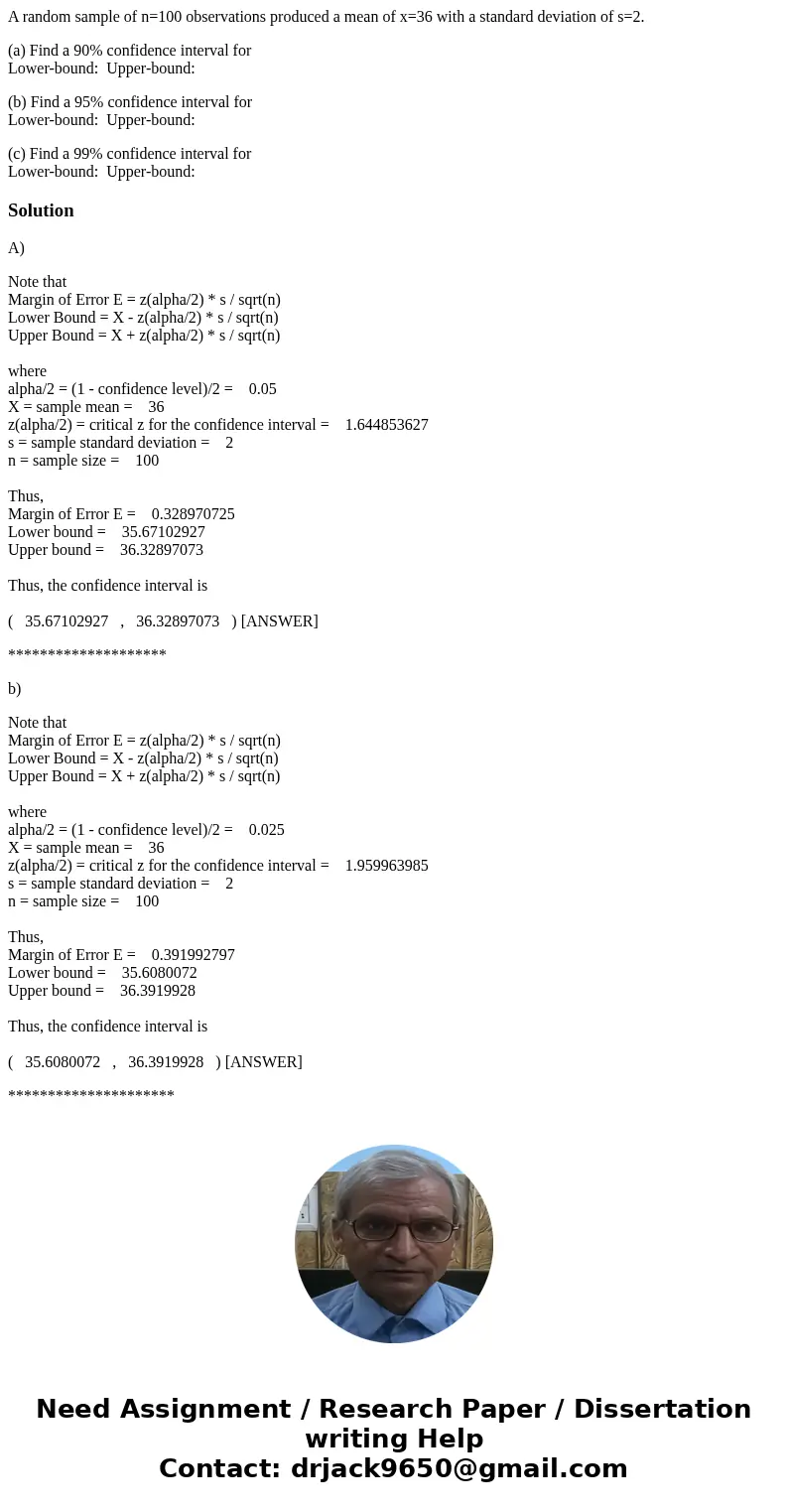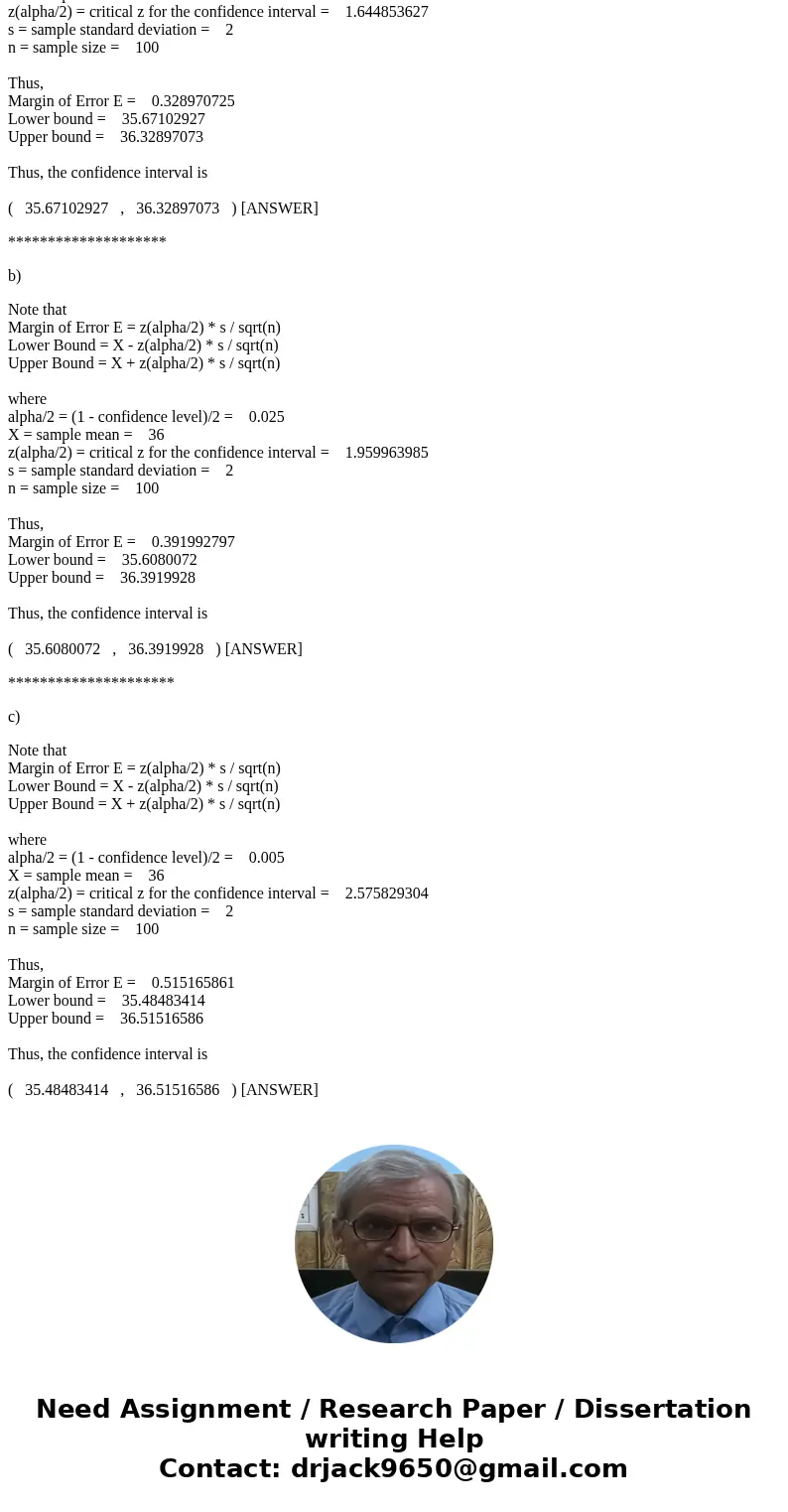A random sample of n100 observations produced a mean of x36
A random sample of n=100 observations produced a mean of x=36 with a standard deviation of s=2.
(a) Find a 90% confidence interval for
Lower-bound: Upper-bound:
(b) Find a 95% confidence interval for
Lower-bound: Upper-bound:
(c) Find a 99% confidence interval for
Lower-bound: Upper-bound:
Solution
A)
Note that
Margin of Error E = z(alpha/2) * s / sqrt(n)
Lower Bound = X - z(alpha/2) * s / sqrt(n)
Upper Bound = X + z(alpha/2) * s / sqrt(n)
where
alpha/2 = (1 - confidence level)/2 = 0.05
X = sample mean = 36
z(alpha/2) = critical z for the confidence interval = 1.644853627
s = sample standard deviation = 2
n = sample size = 100
Thus,
Margin of Error E = 0.328970725
Lower bound = 35.67102927
Upper bound = 36.32897073
Thus, the confidence interval is
( 35.67102927 , 36.32897073 ) [ANSWER]
********************
b)
Note that
Margin of Error E = z(alpha/2) * s / sqrt(n)
Lower Bound = X - z(alpha/2) * s / sqrt(n)
Upper Bound = X + z(alpha/2) * s / sqrt(n)
where
alpha/2 = (1 - confidence level)/2 = 0.025
X = sample mean = 36
z(alpha/2) = critical z for the confidence interval = 1.959963985
s = sample standard deviation = 2
n = sample size = 100
Thus,
Margin of Error E = 0.391992797
Lower bound = 35.6080072
Upper bound = 36.3919928
Thus, the confidence interval is
( 35.6080072 , 36.3919928 ) [ANSWER]
*********************
c)
Note that
Margin of Error E = z(alpha/2) * s / sqrt(n)
Lower Bound = X - z(alpha/2) * s / sqrt(n)
Upper Bound = X + z(alpha/2) * s / sqrt(n)
where
alpha/2 = (1 - confidence level)/2 = 0.005
X = sample mean = 36
z(alpha/2) = critical z for the confidence interval = 2.575829304
s = sample standard deviation = 2
n = sample size = 100
Thus,
Margin of Error E = 0.515165861
Lower bound = 35.48483414
Upper bound = 36.51516586
Thus, the confidence interval is
( 35.48483414 , 36.51516586 ) [ANSWER]


 Homework Sourse
Homework Sourse